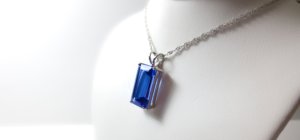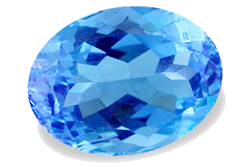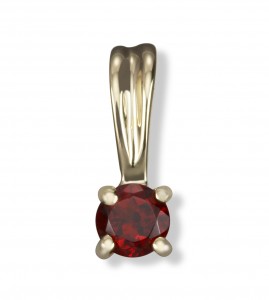[vc_row][vc_column][vc_column_text] Just as gemstones come in a variety of colors and sizes, the level of wear and tear they can endure is particular to each type of gemstone. Each family of gemstones can withstand different amounts of stress and abuse before they scratch or break.
Just as gemstones come in a variety of colors and sizes, the level of wear and tear they can endure is particular to each type of gemstone. Each family of gemstones can withstand different amounts of stress and abuse before they scratch or break.
Read on to learn what you ought to know before making decisions such as choosing to buy a pearl ring for daily use or determining whether to mount your loose emerald in a bracelet. Some gemstones are great options for everyday jewelry, whilst others require more care and concern from their owner.
Remember that proper wear and care can prolong the life of your jewelry, following these notes will give you many useful years for your rings, bracelets, earrings and pendants.
General Jewelry Wear Guidelines
Overall, rings will come in contact with the most friction and abuse over the life of the piece of jewelry. You should take extra care if wearing a delicate stone as a ring.
After rings, bracelets are the jewelry pieces most exposed to wear and tear. They are free agents sliding on our wrists and likely to knock into things from time to time.
The safest zones tend to be earrings or pendants/necklaces as these, worn on our ears or against our breastbones, are in areas that are relatively well protected and less likely have other things coming in contact with them during a typical day.
Be aware that most gemstones being worn as jewelry will eventually become “abraded” over time, especially when worn as a ring. Abrasion is where the gemstone will show small microscopic scratches all over its surface from contact with articles. However, most gemstones can be re-polished or re-cut by a lapidary (gemstone cutter) to restore their previous transparency and fire. For example, Gemart Services – Custom Gemstone Faceting and Lapidary Service are specialists that you can use for this purpose.
Diamonds – Diamonds are rated the highest hardness of any gemstone and they are certainly put to the test in the high frequency with which they’re worn in jewelry. The old adage is that the only substance that can cut a diamond is another diamond. However, they are not indestructible and like most other gemstones, can break or shatter when struck just right or should it have immense force applied upon it. However, it is still an incredibly durable stone and is completely suited to any type of jewelry.
Best suited: Any mounting.
Sapphire & Ruby – Sapphires and Rubies are the next hardest gemstones following diamonds, though they only have a quarter of a diamond’s hardness. They are certainly durable and can take constant wear.
Best suited: Any mounting
 Topaz – Topaz is not as hard or durable as diamonds, sapphires and rubies, but they are relatively strong and will withstand typical daily wear. Topaz, relatively speaking, is approximately 1/6th as hard as a diamond. If you have a stone commonly referred to as “mystic” Topaz, a chemical coating on a colorless topaz causes this rainbow effect on the stone. Thus, you will want to keep this Topaz away from any abrasive or corrosive cleaning products.
Topaz – Topaz is not as hard or durable as diamonds, sapphires and rubies, but they are relatively strong and will withstand typical daily wear. Topaz, relatively speaking, is approximately 1/6th as hard as a diamond. If you have a stone commonly referred to as “mystic” Topaz, a chemical coating on a colorless topaz causes this rainbow effect on the stone. Thus, you will want to keep this Topaz away from any abrasive or corrosive cleaning products.
Best suited: Any mounting.
Emerald & Aquamarine – Emeralds & Aquamarines should be worn cautiously. Emeralds are more fragile than the stones listed above. Emeralds can be damaged by most cleaning solutions, so always remove jewelry before working with abrasives or chemicals. They usually have a large amount of inclusions, making them more likely to fracture if hit against an inclusion.
Best suited: Earring, Pendant. Caution should be exercised when they are worn as rings and bracelets.
Citrine, Amethyst & Smokey Quartz – Be aware that these are all types of quartz and are not as hard or durable as diamonds, sapphires and rubies, but still relatively strong and can withstand typical daily wear.
Best suited: Any mounting.
Tourmaline – They can be worn as rings and bracelets, but with caution as stones can easily become abraded over time. They can be re-polished by a lapidary.
Best suited: Earring, Pendant.

Garnet – They can be worn beautifully as rings and bracelets, but suffer abrasion with daily use. A garnet has a comparable hardness to a steel file; garnets can be re-polished by a lapidary.
Best suited: Earring, Pendant.
The following organic and porous materials will all absorb chemicals and should be removed before doing any cleaning.
Turquoise – These are organic and porous and sometimes dyed or made as a composite material. Chemicals, makeup, oils and extreme exposure to sunlight can all affect the color of turquoise.
Best suites: Any mounting.
Pearl – They can be worn as rings and bracelets, but their lustrous coating will wear away faster. Pearls have roughly the hardness of a human fingernail. The nacre coating that gives pearls their luster is very thin and exists as tiny layered sheets around the pearl. Daily wear over many years will rub the nacre and cause it to flake off. This nacre cannot be put back on the pearl.
Best suited: Earrings, Necklace and Pendant.
Opal – Opals are composed partially of silicone and water, making them a softer option that requires care. Rings should be worn cautiously and removed whenever around chemicals.
Best suited: Earrings and Pendant.
Coral – Coral is organic, and shouldn’t be worn around chemicals. It is rare to find coral in rings, but they should be worn carefully, as coral can be brittle and inclined to break.
Best suited: Pendants and earrings.
If you are careful and protective of your gemstone and jewelry, you will be able to enjoy it for decades. Do you have a story of jewelry care gone awry? Do you have any treasured pieces that have survived generations or that you hope to pass on to a loved one?[/vc_column_text][/vc_column][/vc_row]
